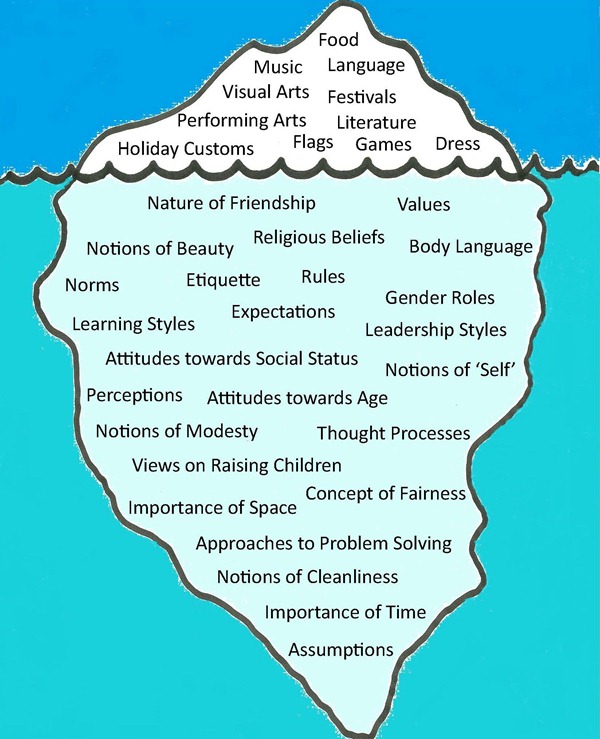Interculturalism

Visualising the Iceberg Model of Culture
Mar 5th
One of my current roles in my school is to lead a group of staff who are interested in exploring the significance of interculturalism within our school community, and to explore ways of furthering intercultural education and sharing relevant best practice.
This has led me to creating the following image. It is based on work originating in the 1970s by cultural / social anthropologists and, soon after, business theorists and there are many similar images on the Internet. I wanted to create a ‘fresh’ version so that I could release it on a Creative Commons License, one that could be freely shared amongst those who find this particular model of culture useful. (Many related images seem to be copyrighted, sometimes because they have used a copyrighted image of an iceberg).
The idea of culture as an iceberg is simple but powerful when reflecting on how a school could actively promote intercultural education. We readily identify with the more ‘visible’ and ‘obvious’ aspects of culture, and so recognise where we celebrate these aspects within the school programme. However, for genuinely meaningful intercultural education to take place, the whole school community needs to reflect on and learn about the less tangible but no less important ‘invisible’ aspects as suggested below the waterline in the image below. Crucially, the cultural aspects on the visible part of the iceberg are influenced by the sub-surface values, beliefs, notions, attitudes and assumptions.
I will post the same image and related links on my school’s interculturalism blog: http://interculturalism.blogspot.com/.
Click on the image for a larger version.
 |
The image by James Penstone is licensed under a Creative Commons Attribution-NonCommercial-ShareAlike 2.0 UK: England & Wales License. |
Inspiration:
The iceberg model of culture has been arrived at through the work of many theorists, including those referenced below:
French, W., & Bell, C. (1995). Organization development. (5th Ed.). [Englewood Cliffs, NJ: Prentice-Hall International]
Hall, E. T. (1976) Beyond Culture [New York: Doubleday]
Selfridge, R., Sokolik, S. (1975) “A comprehensive view of organizational management”. MSU Business Topics, 23(1), 46-61
Weaver, G. R. (1986). “Understanding and coping with cross-cultural adjustment stress”. In Paige R. M. (Ed.), Cross-Cultural Orientation, New Conceptualizations and Applications. [Lanham, MD: University Press of America]


